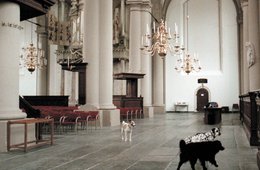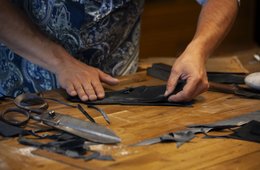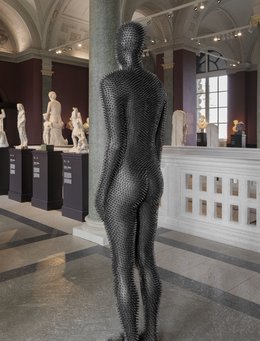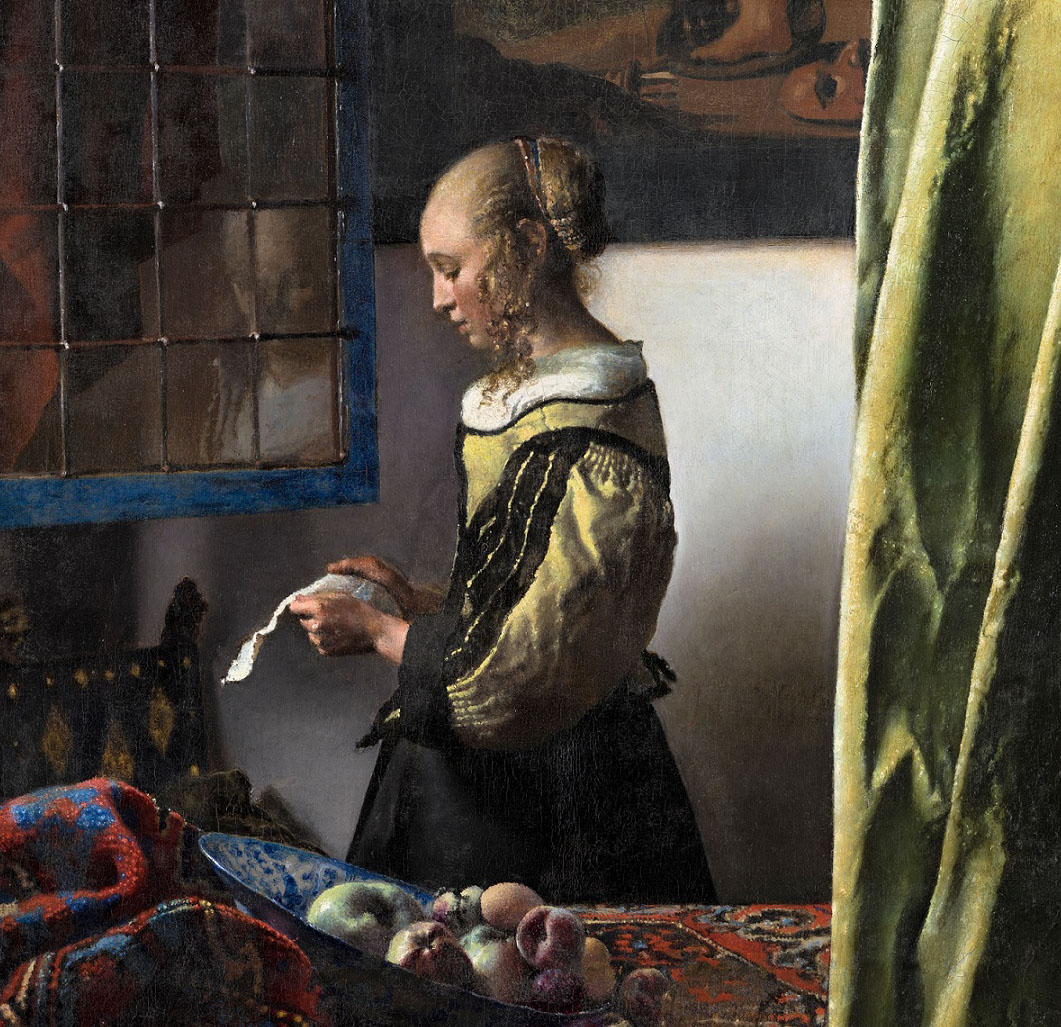Lonnie van Brummelen & Siebren de Haan and the Damaskuszimmer
Blickwechsel: Schenkung Sammlung Hoffmann
In their installation, Lonnie van Brummelen and Siebren de Haan take up the Pergamon Altar, one of the most significant works of the Berlin Antikensammlung. The frieze on its base storey shows the battle between the Olympic gods and the Giants symbolising the victory of order over chaos. Today, the altar also reminds us of the history of imperialist appropriation. In the late 19th century, after excavations in what is today Turkey, the ancient fragments were brought to the Berlin museums. Because the artist duo was not able to obtain permission to film the altar, the 16 mm film shows a collage of filmed reproductions of the frieze.
- Exhibition Site Japanisches Palais
- Dates 01/07/2025—21/09/2025
Van Brummelen
In their work, van Brummelen and de Haan probe the shift in meaning experienced by cultural goods when they are transported from one place to another. In the accompanying video, participants in a German course in Istanbul, who are preparing for departure to Germany, read aloud art-historical texts about the dramatic stories on the frieze. They are preparing for their departure for Germany. Through their tentative attempts to make the story their own through a language that is still foreign to them, the depiction of the battle of the Olympians is made audible and the narrative of the myth is carried forward. Van Brummelen and de Haan shine a light on the powerful connections between migration, language and cultural heritage and power relations – and how these connections are perpetually reflected anew in history.
Bild1
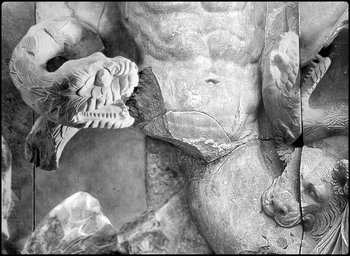
Im Japanischen
In the Japanese Palace, the work Monument to Another Man's Fatherland I, II, IV enters into a dialogue with the Damaskuszimmer (Damascus Room). The richly ornamented, 200-year-old wooden panelling of the Damascus Room once bedecked the ceiling and the walls of a reception room for guests in a house in Damascus. Pastille reliefs refined with copper, tin foil and lustre show tendrils, geometry, gilded inscriptions, colourful paintings, flowers, fruit and cityscapes. The art collector Karl Ernst Osthaus bought the room in Damascus in 1899 and had it dismantled into 113 individual parts and brought to Germany. After his death, his heir donated it to the Museum für Völkerkunde Dresden in 1930. Following extensive restoration, since 2022 the room is open to the public.
Bild2
Die mit unterschiedlichsten Partner*innen
The current presentation, which was developed with various partners, understands the Damaskuszimmer as a storeroom of knowledge and a place of memory. In Dresden, far away from its place of origin, the room raises questions about accessibility, structures of power and hierarchy and practices of hospitality. In a time that continues to be impacted by the consequences of the Syrian war, the room is presented in an exhibition space still visibly damaged by war, thus becoming a place of cultural memory. In an interplay with Monument to Another Man’s Fatherland I, II, IV, questions come to the fore about the mobility of people and cultural assets as well as about the shifts and changes in meaning that arise through cultural appropriation – whether of objects or in the telling of stories.

